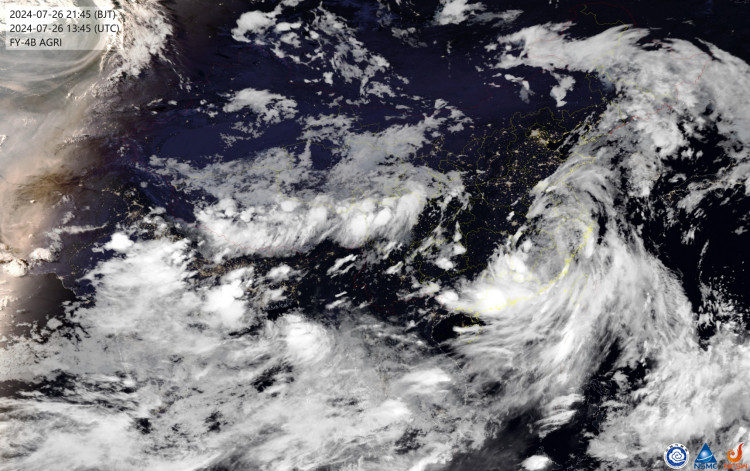Typhoon Gaemi, the most powerful storm to hit China this year, unleashed its fury on the coastal Fujian province on Friday, bringing heavy rains and fierce winds. The typhoon, which has already caused significant destruction in Taiwan and the Philippines, is now advancing into China's densely populated interior.
The storm has already impacted nearly 630,000 people in Fujian, with almost half of them forced to evacuate, according to Xinhua news agency. Earlier in the week, Typhoon Gaemi wreaked havoc in Taiwan, resulting in dozens of deaths, and exacerbated seasonal rains in the Philippines, which have also claimed numerous lives.
Initially packing winds of up to 100.8 kph (62.6 mph) near its center, Gaemi's intensity has slightly decreased from the 118.8 kph recorded on Thursday night when it made landfall in Putian, Fujian. Despite being downgraded to a tropical storm due to its reduced wind speeds, the typhoon's expansive cloud bands continue to pose a significant flood risk, especially to the rivers in central China, which are already swollen from summer rains.
In anticipation of the typhoon's arrival, the Communist Party's politburo, led by President Xi Jinping, convened a special meeting on flood control, emphasizing the protection of lives. "Efforts must be made to prevent breaches of major rivers and the collapse of large and key medium-sized reservoirs," stated the meeting's readout, as reported by Xinhua.
The typhoon has brought unprecedented rainfall to the region, with 72 townships across Fujian recording precipitation levels exceeding 250 mm (9.8 inches). Local weather bureaus reported that the highest accumulated rainfall reached 512.8 mm.
By late Friday, Gaemi is expected to reach Jiangxi province, home to Poyang, China's largest freshwater lake. Forecasters have warned that up to 10 provinces could be affected, including Henan, which has a population of over 100 million. Henan's meteorological bureau predicts that Gaemi will start bringing rains on Friday night.
Looking ahead to next week, Gaemi's impact is anticipated to extend as far north as the provinces of Jilin and Liaoning. Both provinces are already grappling with overflowing rivers and waterlogged cities following a series of powerful summer storms.
Scientists have noted that global warming is intensifying tropical storms, making them less frequent but significantly more powerful. A recent report highlighted that these increasingly severe storms are exacerbated by rising global temperatures.
The typhoon's devastation has not been limited to China. On Thursday, Gaemi caused widespread flooding in several Taiwanese cities and towns, resulting in over 700 injuries and seven deaths. Additionally, a freighter was sunk off the island's coast. Taiwanese government officials reported that nearly 1,000 people were rescued from floodwaters using inflatable boats.
In the Philippines, the storm claimed 32 lives, prompting the capital, Manila, to declare a "state of calamity" due to widespread flooding. A marine tanker carrying industrial fuel also sank in the turbulent seas off the Philippines.
In Taiwan, efforts are underway to rescue sailors stranded by Typhoon Gaemi. The coast guard is working to save dozens of sailors from eight freighters stranded off the southern coast. Earlier today, nine crew members were rescued from a Togo-flagged freighter stranded on a beach. In total, 79 crew members are awaiting rescue on the eight freighters.
As Gaemi made landfall in China on Thursday evening, officials issued extensive flood warnings and evacuations. More than 290,000 people have been evacuated from their homes in Fujian, and emergency responses have been put in place, including the cancellation of flights and trains.
Gaemi is forecast to bring intense rainfall to at least 10 Chinese provinces, including the capital, Beijing, which has already been drenched by days of rainfall. Comparisons are being drawn to Typhoon Doksuri last year, which triggered historic flooding as far north as Beijing and caused nearly $30 billion in nationwide losses.






